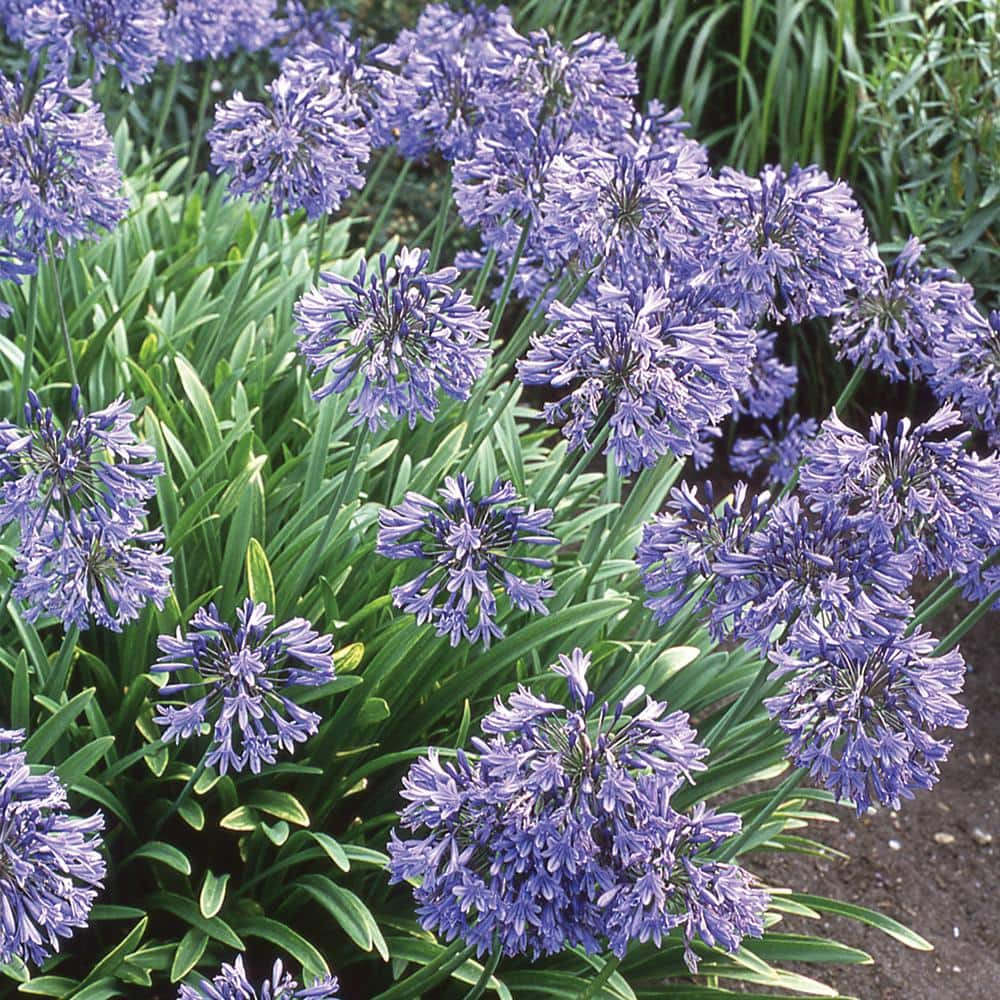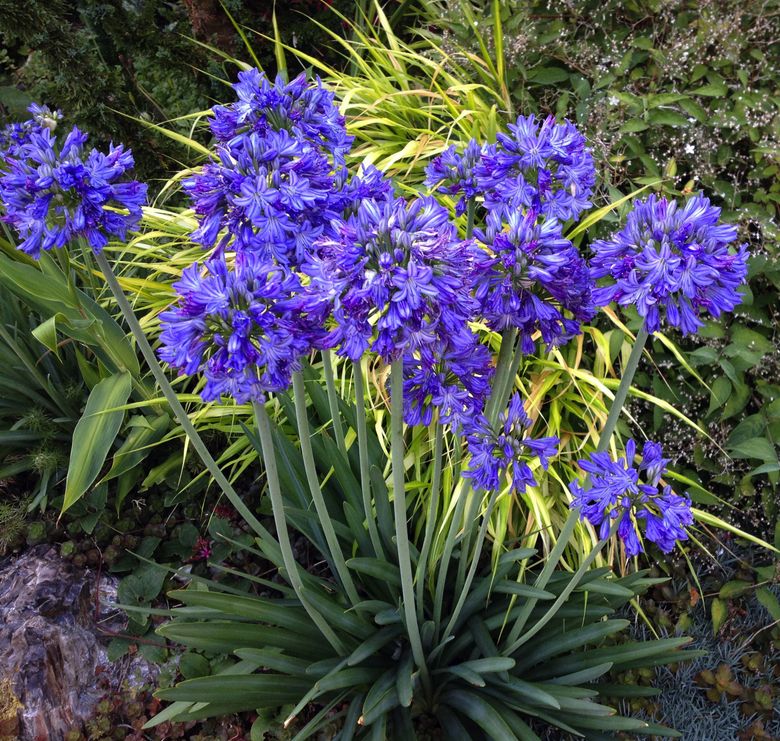Seasonal Agapanthus Care: Preparing for Winter and Summertime
Mastering the Art of Agapanthus Care: Crucial Actions for Healthy And Balanced Growth and Vivid Flowers
In the realm of cultivation, the cultivation of agapanthus stands as a satisfying undertaking for those who seek to support these stylish flowering plants. From picking the right range to understanding trimming techniques, the trip in the direction of cultivating thriving agapanthus plants is multifaceted and holds the essential to unlocking the full potential of these agricultural gems.

Selecting the Right Agapanthus Selection

When picking the right Agapanthus variety for your garden, take into consideration factors such as climate suitability, flower shade, and development habit. Furthermore, think about the climate in your region to make certain the Agapanthus selection you select can thrive in your particular problems. Comprehending the growth routine of different Agapanthus ranges is crucial for correct placement within your yard.
Suitable Growing Problems
Thinking about the optimum ecological needs is important for successful Agapanthus farming. Agapanthus prospers in well-draining soil with a slightly acidic to neutral pH level. When planting, choose a place that obtains complete sunlight to partial shade. In hotter climates, giving some mid-day shade can avoid scorching of the fallen leaves. Agapanthus plants are sensitive to cold temperatures and must be protected from frost throughout cold weather.
To make sure healthy and balanced growth and vivid blooms, plant Agapanthus bulbs at a deepness of regarding 2-4 inches and room them 8-12 inches apart. Mulching around the base of the plants assists keep moisture and reduces weed development.
Watering and Fertilizing Tips
Maintaining appropriate dampness degrees and offering necessary nutrients are crucial elements in the treatment routine for Agapanthus plants. When it involves sprinkling Agapanthus, it is essential to strike a balance. If overwatered, these plants like consistently damp dirt but are at risk to root rot. Throughout the growing season, water deeply as soon as a week, guaranteeing the soil is well-draining to prevent waterlogging. In hotter climates or during durations of dry spell, even more frequent watering might be needed to maintain the dirt evenly moist. However, minimize watering in the wintertime to avoid waterlogged conditions.
Fertilizing Agapanthus is essential for advertising healthy growth and respected blossoms. Apply a balanced fertilizer, such as a 10-10-10 formula, in the very early springtime as brand-new development emerges. Repeat this application every 6-8 weeks throughout the growing season. Prevent excessive fertilizing, as it can lead to lavish foliage at the expenditure of blooms. Always adhere to the maker's directions for correct dilution and application approaches. By following these watering and feeding tips, you can guarantee your Agapanthus plants thrive and create vibrant, durable blossoms.
Pruning Techniques for Agapanthus
Pruning my latest blog post Agapanthus plants at the proper times and with appropriate strategies is crucial for keeping their health and wellness and promoting optimum growth and blooming. The optimal time to trim Agapanthus is in late wintertime or early springtime prior to new growth arises. Beginning by eliminating any type of yellowing or dead leaves near the base of the plant. Cut them as close to the ground as possible without damaging the emerging shoots.
For flowered stems, wait until the blooms have actually withered and after that cut them back to the base. This not just cleans the plant's look yet additionally encourages the advancement of brand-new flower buds. Deadheading spent blossoms can likewise reroute the plant's energy into generating more blooms instead of setting seeds. Nonetheless, if you desire to collect seeds for breeding, leave some blossoms to mature and completely dry on the plant.
Bear in mind to use tidy, sharp devices to make precise cuts and reduce the threat of presenting diseases. Agapanthus. Normal pruning will certainly aid keep your Agapanthus looking neat and healthy and balanced while ensuring an abundant screen of gorgeous blooms
Dealing With Usual Pests and Diseases
After making sure correct pruning methods for Agapanthus, it is necessary to deal with usual insects and conditions that can affect the wellness and vigor of these plants. Agapanthus plants are typically sturdy but can still succumb to specific concerns. One usual bug that influences Agapanthus is the Agapanthus gall midget. This small, orange fly lays its eggs in the foliage, bring about distorted development and flower buds that stop working to open up. To fight this pest, trim and damage you could check here any type of affected plant parts and consider using insecticidal soap.
Additionally, Agapanthus plants can experience from root rot if they are grown in badly draining soil. By being alert and taking prompt activity against insects and illness, you can assist your Agapanthus plants prosper and create vibrant blossoms. Agapanthus.

Final Thought
Finally, mastering the art of agapanthus treatment includes selecting the appropriate variety, offering excellent planting problems, appropriate watering and feeding, suitable trimming methods, and resolving common bugs and illness. By adhering to these necessary steps, you can make certain healthy growth and vibrant blooms for your agapanthus plants. Keep in mind to frequently monitor and preserve your plants to promote their total well-being and durability.
To guarantee healthy development and vivid blossoms, plant Agapanthus bulbs at a deepness of about 2-4 inches and space them 8-12 inches apart. By following these watering and fertilizing tips, you can guarantee your Agapanthus plants flourish and create vivid, lasting flowers.
One common insect that affects Agapanthus is the Agapanthus gall navigate to this website midge. Furthermore, Agapanthus plants can experience from root rot if they are grown in badly draining pipes soil. By adhering to these crucial actions, you can guarantee healthy and balanced growth and lively blooms for your agapanthus plants.